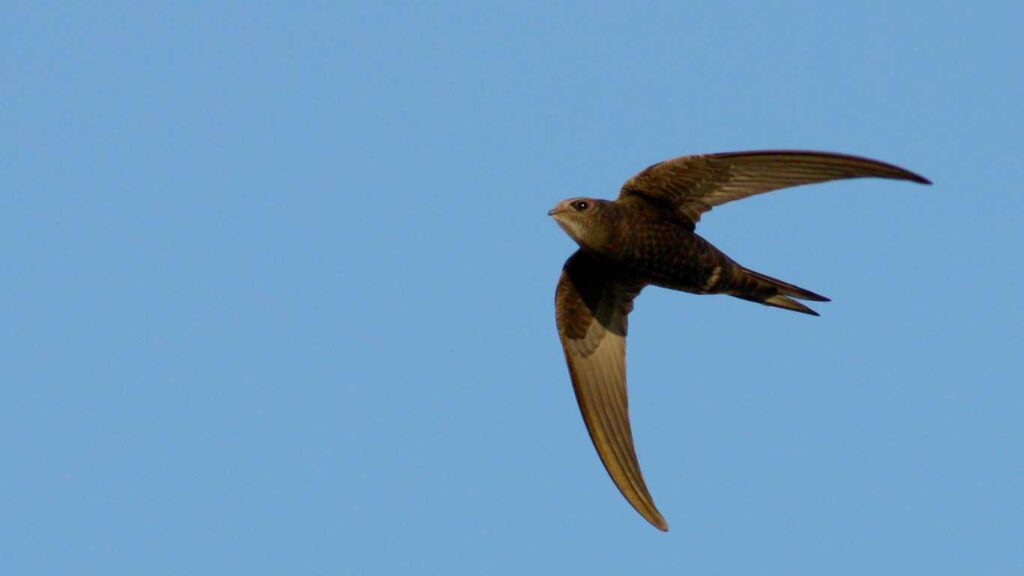Hello, this is Jo from the Wild Bunch. Our last gathering was about swifts. Knowledgeable folk from Bradford on Avon Swift and House Martin Group, Eunice, Caroline, Jean and Roger visited us at the Town Hall on 18th July. Eunice gave a very interesting talk which left us all fascinated by, and inspired to help, these incredible birds.

Swifts are unlike any other birds. They are truly unique. Sleeping, eating, bathing and even mating all happens on the wing. They rarely touch the ground. They are also the fastest birds in level flight, with an impressive top speed of 69mph. Swifts are summer visitors, breeding across the UK. Mid spring/early summer is when we can hear their cheerful screams as they return. Spending their winters in Africa, swifts migrate 3,400 miles twice a year, stopping off to refuel in places like Portugal and France along the way. Swifts pair for life, returning to the same site each year for a little nest tidy up before laying and incubating their eggs. If their nest is blocked or removed, they are unlikely to mate that year. They like to live in houses and churches, squeezing through tiny gaps to nest inside roofs, and only lay 2-3 eggs. This doesn’t happen until maturity which is normally at four years old. As more old buildings are renovated and gaps in roofs closed up, swift nest sites are fast disappearing. This, in part with other factors, resulted in swifts being added to the red list in the 2021 UK Conservation Status Report. Red is the highest conservation priority, meaning swifts urgently need our help.
The good news is that by installing a swift brick in a wall, or putting up a swift nestbox, you could give a swift a place to rest and raise a family. First, you’ll need to check you have a suitable spot for your nest box. Place it on the wall of a building, tightly under the eaves (where the roof hangs over the walls). It should be at least 5m (16 feet) above the ground and easy for swifts to fly into. Think of how a fast flying swift will approach the nest – it flies down and then up to the nest site at speed, the upward swoop helps it slow down to land. The box cannot be in direct sunlight as the chicks are likely to die from overheating, so place it on a wall that faces north, east or somewhere in between. If you are having major renovation works done, you can install a special swift brick. To help attract swifts to your nesting box, playing swift calls near the nest site is recommended. You can purchase special swift sound boxes online or borrow one from a local swift group.
If your home isn’t suitable to house swifts you can still help by encouraging owners of buildings that are more suitable, such as local churches and larger buildings, to install swift boxes or bricks. The Town Hall in Frome where I work is a perfect place for swifts to nest and we often see them flying nearby. Inspired by the recent talk, next week we will be carrying out a survey to establish whether swifts nest in the building, and if they don’t we will be encouraging them by installing boxes.
Swifts rarely touch the ground. If you see one on the ground, gently scoop it up with your hands, lift it up and let it take off when it’s ready. Do not throw it in the air. Lastly, to help swifts, we must not use pesticides. Swifts have a big appetite for flying insects such as midges, mosquitoes and aphids. Insect number decline is another major contributor to swifts being in trouble.
To join the Wild Bunch or receive our newsletter, email fromewildbunch@gmail.com. Visit www.frometowncouncil.gov.uk/our-community/community/wild-bunch to learn more about us and what we do. Our next gathering will be pond dipping at Welshmill pond on Thursday 15th August at 13.30-15.00.

